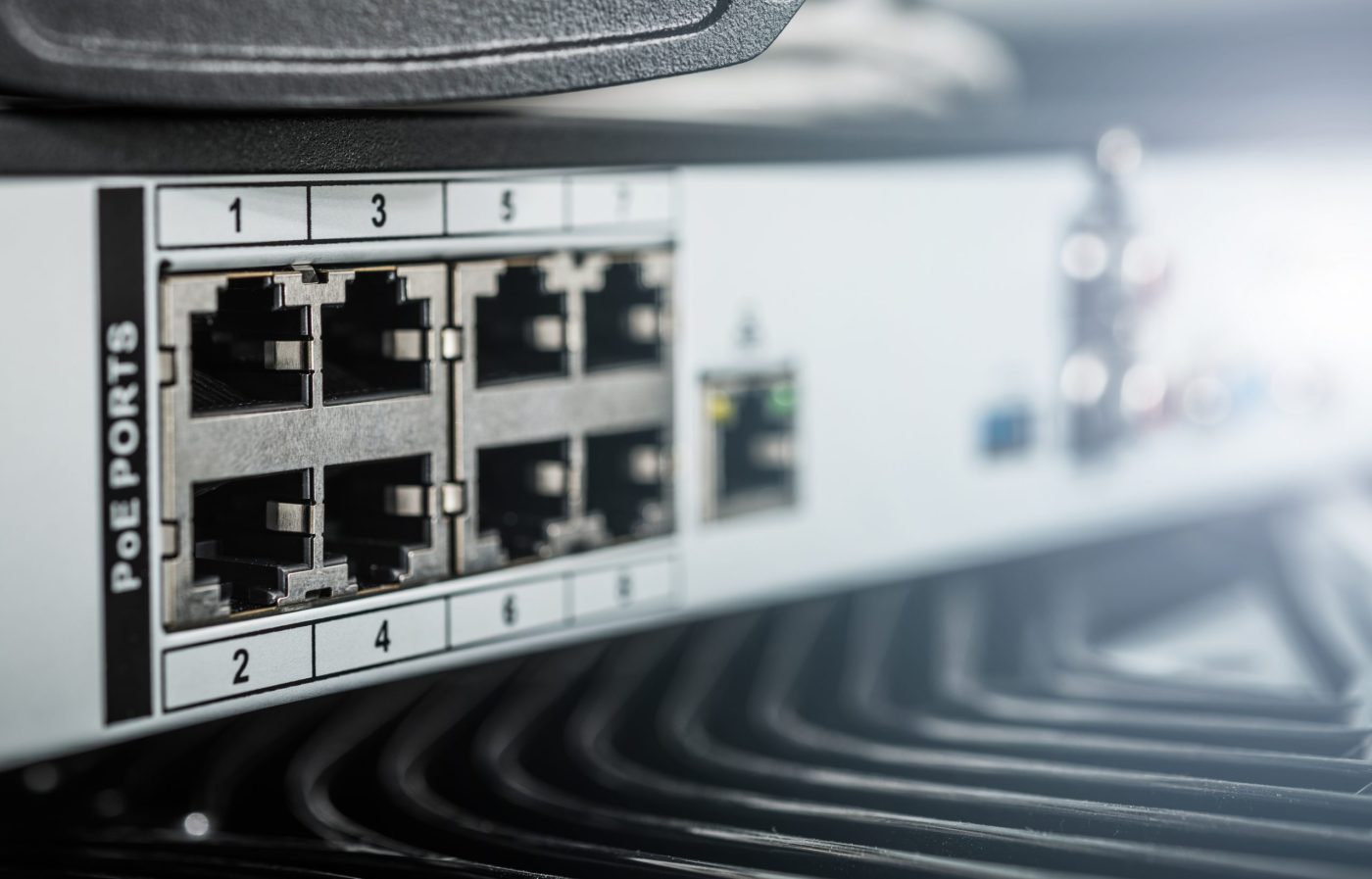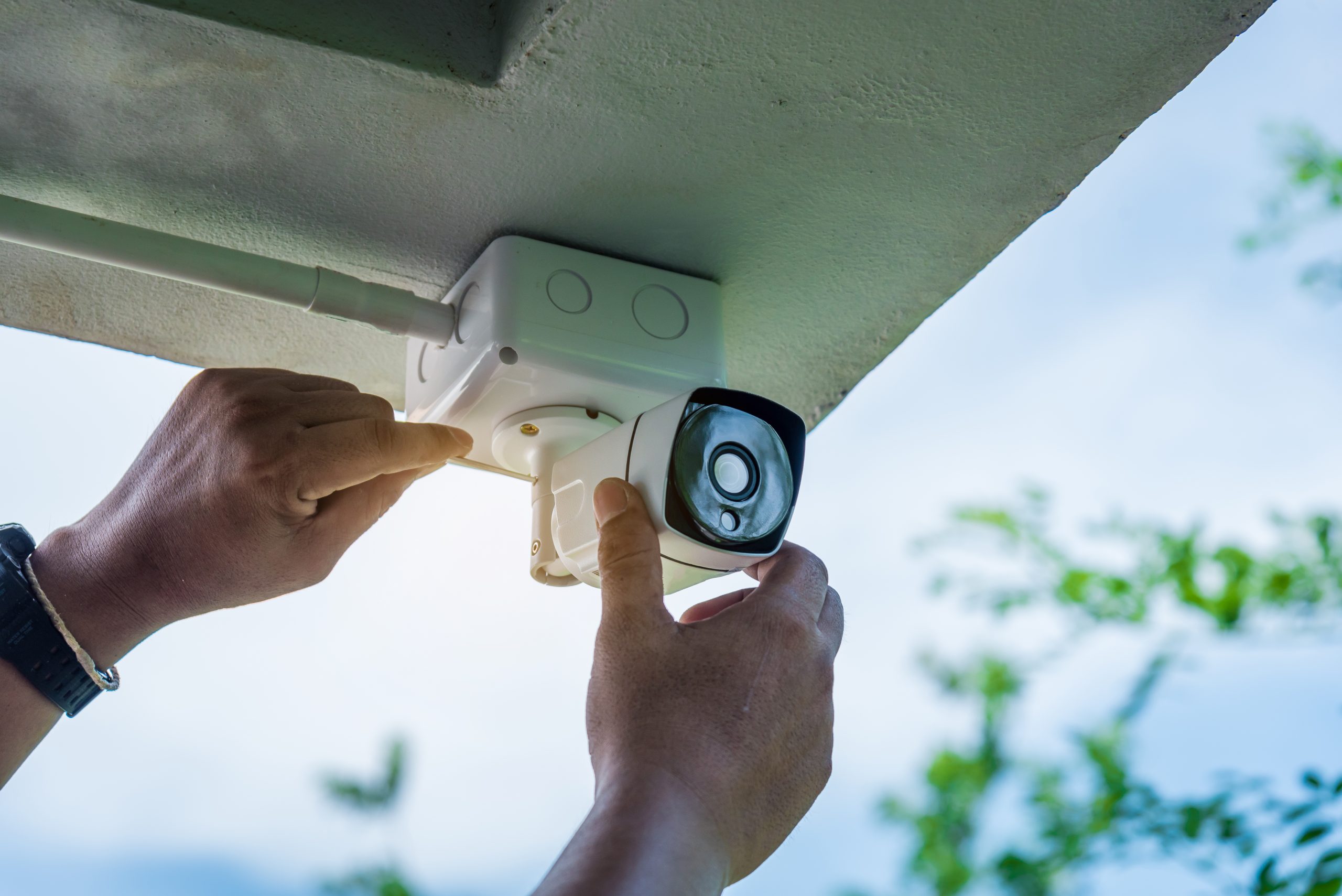The right network infrastructure for video surveillance
Structured network cabling forms the basis of high-performance networks for transmitting data, as required in video surveillance. In addition to the active components, the properties of the various cable types and the structure of the cabling are decisive for the performance of the networks.

Professional networks are based on the principle of structured network cabling. The aim of structured cabling is to create a future-proof basis for networks that allows easy installation of network components and can be flexibly expanded. Compared to unstructured cabling, it offers the advantage that it is not tied to specific application scenarios and prevents high costs for technology changes or expansions.
Special case video surveillance
That sounds good. But what exactly needs to be done to achieve this goal for the network planning of a video surveillance system? What problems arise in practice and how can they be solved?
First, the concept of structured network cabling must be explained in more detail. As the name suggests, planning must follow a clear structure. For structured cabling, the European Committee for Electrotechnical Standardization (Cenelec) has developed the European standard EN 50173. Internationally, the similar ISO/IEC 11801:2002 standard is significant. The cabling must be planned accordingly for the respective building object.
In addition, the maximum permissible cable lengths and quality requirements of the network cabling must be observed for the existing cable routes. For fiber optic cabling, this can be several hundred meters to many kilometers. For copper cabling, the end is after about 90 meters. At this point, at the latest, a switch must be reached from which it continues to the camera. Structured cabling can easily serve several hundred cameras, but can also be used for small networks.
Planning from the outside in
If structured building cabling has been planned in the project, the appropriate network components must be defined for each subsection - primary, secondary and tertiary levels. The network is always aligned with the components to be connected in the tertiary area. In this case, it is the network cameras. So you plan from the outside in to make sure that the requirements can be met. Conversely, it quickly happens that the central components are undersized, which in turn has a negative impact on the selection and performance of the cameras to be connected.

Power-over-Ethernet (PoE)
State-of-the-art and absolutely future-proof are video cameras with a Power-over-Ethernet connection. This means that the camera is connected via only one network cable. Power and image data flow through this cable. The planning of the video camera results in fixed values for the required power consumption and the bandwidth needed for data transmission. In order to plan future-proof, a consumption of 60 watts (equivalent to a 4K PTZ camera) and a bandwidth of about 100 Mbit/s must be expected here. Also to be considered are the spotlights. Today, these can also be supplied via PoE. The performance requirements of the cameras and the spotlights result in the requirements for the network cable to be laid and the switches needed. CAT-7 cables are currently the state of the art. In addition to the electrical properties for data transmission, the core cross-section is an important point for network cables. Here, the currently largest available wire cross-section, AWG22 (AWG: American Wire Gauge), should be selected in order to keep the losses for PoE as low as possible. In the meantime, data connectors adapted for PoE are also available, which are intended to prevent arcing and tear-off sparks when the network cable is removed. However, these should only be disconnected after the PoE supply has been switched off.
Caution is required when selecting the switches. Here, care must be taken to ensure that each port can simultaneously provide the required PoE power. The power budget of the power supply units installed in the PoE switch must be sufficient to supply all required PoE ports simultaneously as well as the switch itself. The electrical power requirement must be provided by a power supply including UPS (uninterruptible power supply) and power backup system, depending on the protection requirements of the video surveillance system.
Determine responsible person
During the construction phase, it is very important to clearly define the individual interfaces. Each trade and each executing company must have defined by the planner and client which requirements the latter places on the other trade, up to which point its responsibility extends and from which component this responsibility ends. If this is not clarified, gaps in the work and assembly planning, execution, as well as potential supplements and time delays are to be expected. Without these concrete specifications, the trades can assign blame to each other in the event of functional problems after completion.
The network company's interface or area of responsibility should therefore end at the patch panel or junction box or at the jack of the network cable. The installer's interface for the camera starts from the camera housing or camera mount and ends at the network cable's jack. Before connecting the camera to the network cable, make sure that the lines have been measured through. The network installer must measure through the cables, and the person responsible for the network (IT department, building owner, network planner, video installer, etc.) must assign the IP addresses.
Acceptance test
These services must be checked during acceptance and documented in a protocol. Only when there are no more defects may the camera installer connect the video camera to the network cable and fasten it there.
During factory and assembly planning, it is important that the client or planner ensures that the various trades are aware of the plan statuses and have a certain say in the process. We especially recommend this when dealing with listed building elements or façade elements with warranties. Before the hole for the network cable is drilled, all parties involved must be in agreement.









